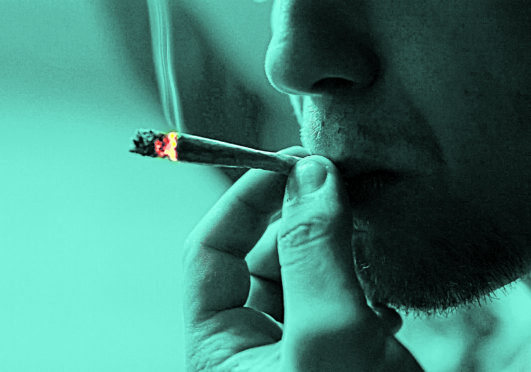
Children and teenagers who smoke even small amounts of cannabis are six times more likely to develop schizophrenia than those who do not, a study has found.
The research found no difference in the risk of developing the condition between both high-frequency and low-frequency users.
We reported last week how the number of Scots suffering mental illness linked to cannabis has surged since use of the drug was effectively decriminalised.
The number of users hospitalised due to psychiatric illness has climbed by 74% since 2016 when police began warning those caught with the drug for their own use. They jumped from 1,191 in 2015-16 to 2,067 last year.
The new study, by researchers Shea-Lee Godin and Sherif Shehata of the Saint James School of Medicine, Saint Vincent and the Grenadines, focused on adolescents aged 12-18.
It found both low and high users were six times more likely to develop the illness, which normally afflicts only one in 300 people.
The researchers concluded: “Both high and low-frequency marijuana usage were linked with a significantly increased risk of schizophrenia.”
“We do need to worry about young people”: Doctors reveal surge in psychosis linked to cannabis
Schizophrenia can occur at any age, but on average it tends to happen in the late teens and early 20s for men, and late 20s and early 30s for women.
Adam Winstock, founder of the Global Drugs Survey and honorary professor of clinical medicine at University College London, said the younger people started taking drugs, the bigger their risk of psychotic illnesses. “The risk is highest for those who use it under the age of 16,” he said.
“The other thing that adds to that risk is whether you come from a family with a genetic vulnerability to psychosis that some people will be aware of. If you are a 15-year-old with two parents with schizophrenia, you will be at greater risk than a 15-year-old who doesn’t.
“Any public health policy around drugs should be focusing on delaying the age of onset. That would be the most productive thing to do as well as raising individual awareness of genetic risk.
“If you want to optimise your health and wellbeing and minimise your risk of developing psychotic illnesses, don’t use drugs when you are young. Grow your brain before you expand it.
“A lot of people with psychotic illnesses continue to use cannabis.
“One in three remissions for psychotic illnesses are associated with cannabis use. Why would they continue to use it? That’s a challenge for clinicians.”
Research in the US has also bolstered the link between cannabis and mental illness.
Analysis by McLean Hospital, Massachusetts, found admissions due to cannabis-associated psychosis are up to 2.5 times higher in parts of the country where the drug has been legalised.

Enjoy the convenience of having The Sunday Post delivered as a digital ePaper straight to your smartphone, tablet or computer.
Subscribe for only £5.49 a month and enjoy all the benefits of the printed paper as a digital replica.
Subscribe